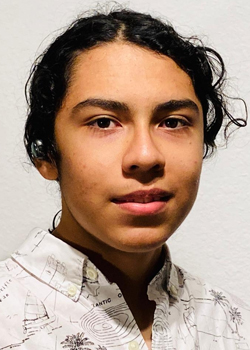
On July 20, the University of Hawaiʻi’s Pan-STARRS1 telescope atop Haleakalā discovered an asteroid 65 feet in diameter that appeared likely to pass close to Earth. Asteroid 2020 OO1 safely flew by Earth a week later. Some of the first follow-up images of the approaching asteroid were taken by Hawaiʻi high school students participating in the UH Institute for Astronomy (IfA) HI STAR program using telescopes from the Las Cumbres Observatory (LCO) global telescope network.
- Related UH News story: Asteroid discovered by UH telescope will make close pass Monday, July 24, 2020


Pan-STARRS is the world leader in finding Near-Earth Objects (NEOs). The discoveries from the Maui-based project are used by local high school students to direct follow-up observations with LCO. HI STAR students Esken Guarin and Jed Teagarden obtained data from the South Africa node of the LCOGT 1.0 meter network on the night 2020 OO1 was discovered.
J.D. Armstrong, HI STAR director and IfA Maui outreach astronomer, also mentors Kihei Charter High School student David Florez who verified images with LCO’s Faulkes Telescope North on Haleakalā. Those observations were reported to the Minor Planet Center (MPC), and the students received credit.
“It’s great to see our high school students being part of cutting edge science, using data from Hawaiʻi’s observatories and around the world. These are our future STEM superstars,” said Armstrong.
Guarin and Teagarden received high honors at the 2020 Maui County Science and Engineering Fair for their astronomy research. Guarin has observed exoplanets and authored several MPC circulars. Teagarden has studied asteroids and presented a project on sun-orbiting asteroid Gault.
During the COVID-19 pandemic, observatories around the world temporarily ceased operations, but locating asteroids through remotely operating telescopes continued. HI STAR students have been able to use robotic LCO telescopes for follow-up observations.
The search for NEOs is funded by NASA’s Planetary Defense Coordination Office through its NEO Observations Program.
—By Moanikeʻala Nabarro

